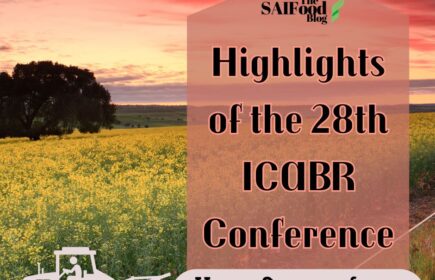From June 11-14, I had the pleasure of attending the International Consortium on Applied Bioeconomy Research (ICABR) Conference. This conference is the premiere conference on evidence of the benefits of biotechnology innovations as well as bioeconomy contributions towards mitigating greenhouse gas emissions. The conference is widely attended by academics across North and South America and Europe, with smaller contingents from Africa and Asia. I have been lucky enough to be attending since 2000, and am the incoming President for 2025.
The theme of this year’s conference was the importance of innovation for increasing agricultural production. One key message included the fundamental importance of increased agricultural productivity for economic growth. Douglas Gollin from Tufts University highlighted evidence dating back to the early 1960s about the connections between increased agricultural production and economic growth. Complementing this was a presentation by Keith Fuglie from the USDA on how improved productivity is increasingly due to the results of innovation and not from increased land use. Carolyn Fischer from the World Bank also provided interesting insights into how European environmental policies impact developing countries, especially in terms of exports.
A panel session was organized by the World Intellectual Property Office (WIPO), highlighting the importance of intellectual property rights for increased production. Intan Hamdan-Livramento from WIPO illustrated how the products of 626 economy wide innovations have created over $300 trillion in exports. This session also discussed that while innovation is important for industrial countries, it is especially important for developing countries. Intellectual property in crop agriculture is increasing, indicating that these innovation protection mechanisms are encouraging investments in the development of new crop varieties and technologies.
Saskatoon Bound
The ICABR conference will be held in Saskatoon in 2025, from July 8-11. As the incoming ICABR President, I’m pleased to share my community and our vast connection to agriculture, innovation, and our pursuit to advance our bioeconomy. It provides an excellent opportunity to hear firsthand about the impacts and benefits of innovations within the global agricultural industry. Perhaps the most enjoyable part of the conference is witnessing graduate students from many countries proudly sharing the results of their research. Having the chance to discuss their research with them after their presentation is very informative. I have learned so much at this conference that it is difficult to retain all of it. My hope is that next summer, being hosted locally, we will see a large turnout of Canadian and American graduate students sharing their research.
Summer Has Arrived
As I sit writing this, the final blog of the 2023-2024 academic year, a thunderstorm is looming. Deep resonating booms of thunder are to the west and will be here before too much longer. It is certainly pleasant to be able to look outside and see the lush greenness of the landscapes this year. Hopefully, the moisture is reaching those areas of the Prairies that have experienced prolonged drought.
This year, SAIFood increased its output. We went from publishing one blog per week to two, which was alternated with publishing one new blog and reposting a previously published blog. We again published a significant number of student blogs. The quality and diversity of blogs this year are due to my incredibly competent staff and students. Staff including Claire Williams (who led the charge of SAIFood this past year), Savannah Gleim, Elisabeta Lika and Chelsea Sutherland all contributed blogs, while graduate students Judson Christopherson and Kate Sauser did as well. I would like to thank my staff and students for their hard work, exceptional research and writing skills and their willingness to explore new topics and ideas. SAIFood’s success is a result of these dedicated individuals.


